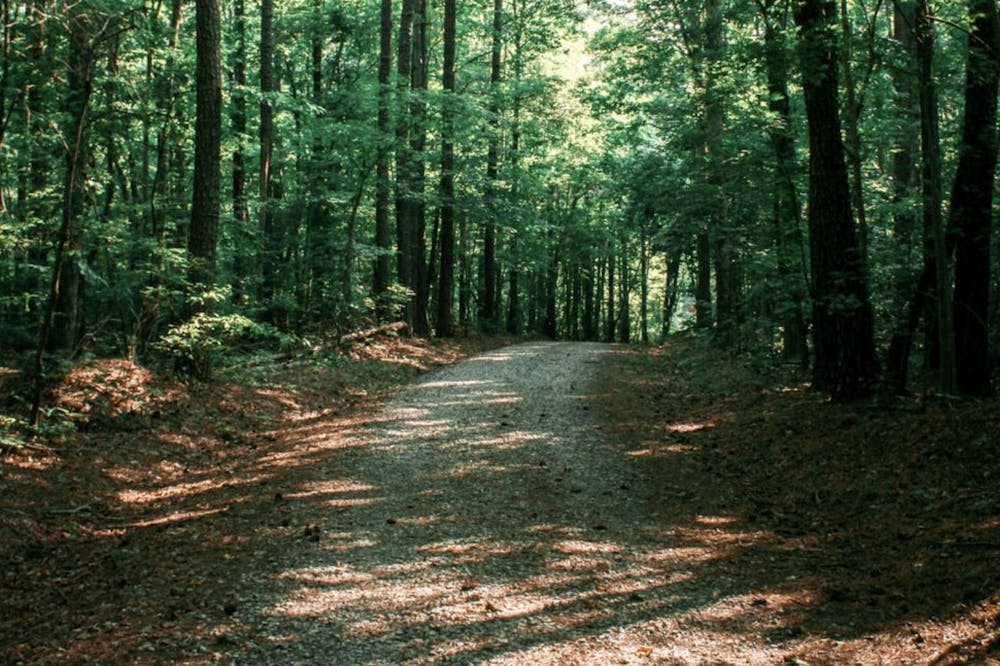The Duke Forest’s 14th annual deer herd reduction program began on Sept. 27 and will end on Dec. 17, meaning that the Durham, Korstian and Blackwood divisions of the Duke Forest will be closed on weekdays during that period.
“Deer herd reduction is a critical stewardship activity that significantly contributes to our primary objective of ensuring that the Duke Forest remains a teaching, research and natural asset well into the future,” reads the Duke Forest Website.
Sara Childs, director of the office of the Duke Forest, emphasized the “very tightly controlled and administered” nature of the hunt, explaining that “not just anyone with a hunting license can come to the Duke Forest and hunt.”
“We work with two pre-selected and vetted hunt groups,” Childs said. For the Durham and Korstian divisions, a subset of the North Carolina Bowhunters Association’s (NCBA) Certification and Referral Service utilizes bow hunting. For the Blackwood division, the Chapel Hill Wildlife Management Group, composed of primarily current or former Chapel Hill police officers, uses guns as well as bow hunting.
To be eligible for the program, hunters must be a part of one of the two groups, attend an orientation with the Duke Forest staff, sign guidelines regarding rules to adhere to while in the forest, sign a liability waiver and attend a presentation about Duke Forest’s intentions and goals for the hunt.
“We know every single hunter that’s out there, and we’ve actually interacted with every single hunter that’s out there before they’re even allowed to start going out into the woods,” Childs said.
In terms of day-to-day operations, hunters must check in and out of the forest every time they enter or exit. Childs said that this tightly regulated process is a lot to manage, but crucial to the success and safety of the hunt.
“We have what we call a deer phone. Our administrative assistant will get a text in the morning that says ‘I am hunter #25. My name is this. I'm checking into this division and this 500 square foot grid cell,’” Childs explained. “So we know down to the 500 square foot grid cell where every hunter is at any given time in the forest. And then when they leave the forest, that location, they check out by sending a text or a voicemail.”
Childs shared that Duke students who were North Carolina bowhunters in the NCBA’s Certification and Referral Service have participated in past hunts. This year, at least one current Duke staff member will be in attendance.
“The deer herd reduction began yesterday and so far so good! We’ve already taken three does from the forest,” Childs said.
Duke Forest functions as a teaching and research laboratory, so one important reason for the hunt is the collection of data on deer herds for the North Carolina Wildlife Resources Commission’s Deer Management Assistance Program. All hunters must fill out an information sheet on each deer they take, weigh it and collect the jawbone so that the biologists can age the deer, though additional measurements may need to be recorded given the circumstances.
“We do have a lot of deer around in most parts of the state, and when the deer are overabundant, they can also suffer from different diseases that run through the population,” Childs said.
“Say for example, there's a disease called chronic wasting disease that the state agency might suspect is starting to break out in the deer population. Then, they will tell hunts like ours, ‘Oh, you're already collecting deer data for us to participate in this hunt. We also want you to collect this additional piece of information from the deer so that we can monitor for this disease.’”
In the past, Duke faculty and student researchers have used the deer herd reduction to monitor Lyme disease in ticks on deer.
“It's a management activity to protect the health of the forest, but in a lot of ways, it's also a research activity,” Childs said.
Childs encouraged students to look into the various research, educational, work-study and volunteer opportunities that the Duke Forest has to offer. Additionally, the FAQ section of the Duke Forest website provides explanations for why the hunt needs to take place and other concerns. Childs noted that this year’s reduction has not received much pushback from students nor University administration.
“Because we're in our 14th year, people are now pretty used to what we're doing,” Childs said.
However, Childs acknowledged that the closure may be more impactful than usual due to the pandemic, since spending time in the forest has been a safe and relaxing activity for many.
“We've tried to do a pretty good job of saying why it's so important, and all the considerations we've put into place in managing this really important activity for the forest. Once we talk to people in depth about our connection with the hunters, the training that they have to go through before they can hunt in the forest, how we are in touch with them every single time they are going to hunt in the forest two times, I think people start to really understand and feel comfortable,” Childs said.
“The Forest staff has really considered all of these different perspectives about how people want to use the forest and this is maybe the meeting of the middle.”
Get The Chronicle straight to your inbox
Signup for our weekly newsletter. Cancel at any time.

Madeleine Berger is a Trinity senior and an editor at large of The Chronicle's 119th volume.

